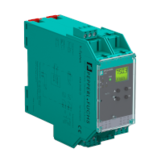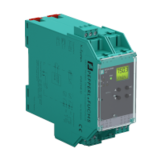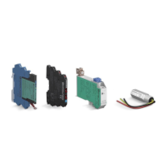風力発電 – 風タービン用落雷保護
strong>落雷保護
風力は太陽エネルギーの一形態です。太陽が大気を不均衡に暖めることにより、地球表面の不均等と地球の自転が風を起こします。風の流れのパターンが、地球の地形や水塊、植樹などにより影響されます。私たちはこの風の流れを利用して発電するのです。
風エネルギーまたは風力という表現は、風が機械的な力または電気を発生させるプロセスを指すのです。風力タービンは、風の運動エネルギーを機械的な力に転換します。この機械的な力が、特定タスク (穀物を粉に粉砕したり水をくみ上げたり) を行うために利用されたり、またはこの機械的な力を電力に転換したりすることができるのです。
では、風力タービンはどうやって電気を作り出すのでしょう?単純に言うと、風力タービンは扇風機と逆に作用するのです。電気を使って風を起こす代わりに、風力タービンは風を使って電気を作ります。風がブレードを廻し、それがシャフトを回転させ、それが発電機に接続され、電気を起こすのです。
ほとんどの風力タービンは、60-150 メーターの高さにあるので、落雷や電力サージに対してひじょうに敏感です。IEC 61400-24; (VDE 0127 part 24) は、落雷防止コンセプトの設計の基礎となるものです。
Pepperl+Fuchs は、産業施設を落雷の危険から保護するよう設計された製品の完全なラインを提供します。サージ保護、落雷保護、信号絶縁、および安全接地経路を提供する製品が使用可能です。

Frequency converters from Pepperl+Fuchs, in combination with inductive sensors, enable reliable detection of the rotational speed. This ensures that the speed of the generator does not exceed certain limits.

Pepperl+Fuchs signal converters transmit analog signals to the controller via galvanic isolation. In wind turbines, for example, temperature converters record the values from temperature sensors and transmit them safely. This makes it possible to monitor that oils or oil films on the drive shaft of the generator do not become too hot.

Transmitter power supplies from Pepperl+Fuchs are used in wind turbines for pressure measurement. They transmit signals from pressure transducers to monitor the oil pressure of the generator shaft.

Wind turbines are up to 200 meters high and therefore very susceptible to lightning. Pepperl+Fuchs offers a complete product portfolio designed for surge protection: The modules reliably discharge surges via grounding, therefore protecting people and equipment. Suitable devices are available for signal and supply lines as well as for fieldbus infrastructure.








 +81 45 6249077
+81 45 6249077